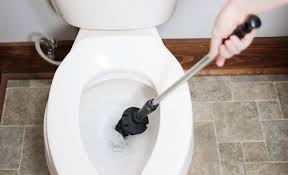Dealing with clog toilets can be a frustrating and messy experience. Whether it’s a minor blockage or a severe obstruction, knowing how to handle the situation can save you time, money, and stress. In this article, we’ll explore the causes of clogged toilets, effective methods to unclog them, and preventive measures to avoid future issues.Common Causes of Clog Toilets
- Excessive Toilet Paper: Using too much toilet paper is one of the most common reasons for clogs. While toilet paper is designed to dissolve, large quantities can overwhelm the plumbing.
- Non-Flushable Items: Items like wet wipes, feminine hygiene products, and paper towels are often mistakenly flushed down the toilet, leading to stubborn clogs.
- Low-Flow Toilets: Older low-flow toilets may not have enough flushing power to clear waste effectively, increasing the risk of clogs.
- Hard Water Deposits: Mineral buildup from hard water can narrow the pipes, making it easier for blockages to occur.
Effective Methods to Unclog Toilets
- Use a Plunger: A plunger is the most common tool for unclogging toilets. Ensure you have a good seal around the drain and use vigorous up-and-down motions to dislodge the blockage.
- Try a Toilet Auger: If the plunger doesn’t work, a toilet auger (or snake) can reach deeper into the pipes to break up or retrieve the clog.
- Hot Water and Dish Soap: Pouring a mixture of hot water and dish soap into the bowl can help lubricate and break down the clog. Let it sit for 10-15 minutes before flushing.
- Baking Soda and Vinegar: This natural combination creates a fizzing reaction that can help dissolve minor clogs. Pour half a cup of baking soda followed by a cup of vinegar, wait 30 minutes, then flush.

Preventive Measures to Avoid Clog Toilets
- Educate Household Members: Ensure everyone knows what can and cannot be flushed down the toilet.
- Use Less Toilet Paper: Opt for thinner, biodegradable toilet paper and use only what’s necessary.
- Regular Maintenance: Periodically clean your toilet and pipes with a mild drain cleaner to prevent buildup.
- Upgrade Your Toilet: If you have an older low-flow model, consider upgrading to a more efficient toilet with better flushing power.
When to Call a ProfessionalIf you’ve tried all the above methods and your toilet remains clogged, it may be time to call a professional plumber. Persistent clogs could indicate a more serious issue, such as a blockage deep in the sewer line or a problem with your septic system.ConclusionClog toilets are a common household problem, but with the right knowledge and tools, they can often be resolved quickly. By understanding the causes, using effective unclogging methods, and taking preventive measures, you can keep your toilet functioning smoothly. Remember, when in doubt, don’t hesitate to seek professional help to avoid further damage.
